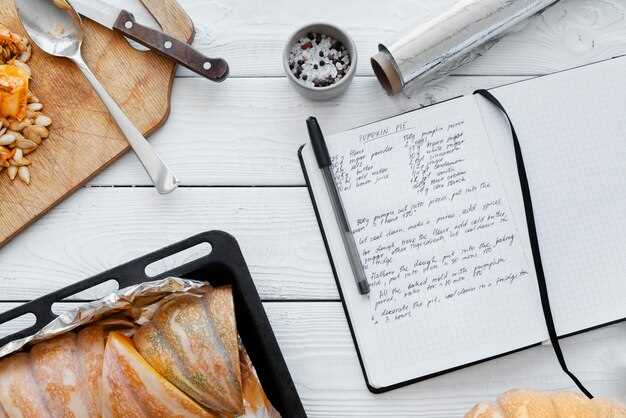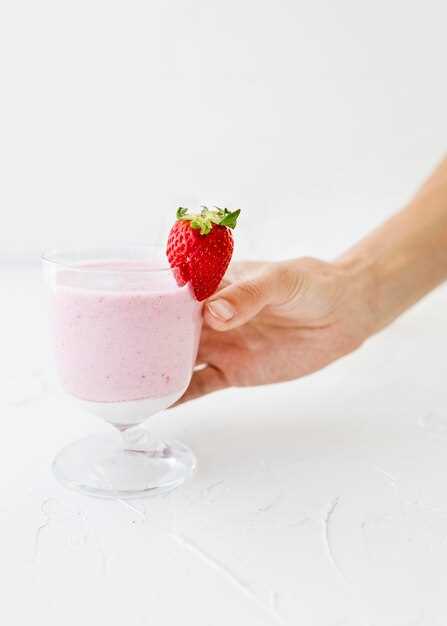Tired of takeout? You can whip up a delectable Lemon Herb Roasted Chicken with roasted root vegetables in under 45 minutes, utilizing just one pan for minimal cleanup. The key? Pre-cut vegetables and a spatchcocked chicken, which roasts much faster and more evenly.
For a flavor-packed weekday dinner, try Shrimp Scampi with Zucchini Noodles. Replace traditional pasta with zucchini noodles (spiralized or julienned) to significantly reduce carbohydrate intake while boosting nutrient density. Sauté shrimp with garlic, white wine, lemon juice, and red pepper flakes for a satisfying dish that’s ready in 20 minutes. Pro Tip: Use frozen shrimp, thawed quickly under cold running water, to save time.
Craving something sweet? Microwave Mug Cakes offer instant gratification. Combine flour, sugar, cocoa powder, baking powder, and a pinch of salt in a large mug. Add milk, oil, and vanilla extract, stir well, and microwave for 60-90 seconds. Experiment with different flavor combinations: chocolate peanut butter, vanilla sprinkle, or cinnamon coffee cake. Remember to adjust cooking time based on your microwave’s wattage.
Quick Suppers: Mastering Culinary Basics
For speedy weeknight dinners, prioritize dishes with minimal ingredients and short preparation times. Grilled cheese sandwiches transform into gourmet fare with the addition of thinly sliced apple and brie. Toast in a skillet with butter until golden brown.
One-Pan Wonders
Reduce cleanup with one-pan preparations. Roast chicken thighs with root vegetables such as carrots, potatoes, and parsnips. Season generously with herbs like rosemary and thyme, and drizzle with olive oil before baking at 400°F (200°C) for 45 minutes.
Elevated Instant Noodles
Upgrade instant noodles by stirring in a whisked egg while the broth is simmering. Add sliced green onions, cooked shrimp, and a dash of soy sauce for an enhanced flavor profile. Sesame oil provides added richness.
5-Ingredient Weeknight Pasta: Ready in 20 Minutes
Use high-quality dried pasta; bronze-die extruded varieties offer superior texture. A 1lb package is sufficient for four servings.
Combine 28oz crushed tomatoes (San Marzano preferred), 1/4 cup extra virgin olive oil, 4 cloves minced garlic, and 1 tsp red pepper flakes in a large pot. Simmer for 15 minutes.
While the sauce simmers, prepare pasta according to package directions. Reserve 1 cup of pasta water before draining.
Incorporate drained pasta into the tomato sauce. Add reserved pasta water as needed to achieve desired consistency.
Garnish with fresh basil leaves (1/4 cup, roughly chopped) and grated Parmesan cheese (1/2 cup). Serve immediately.
Perfect Scrambled Eggs: Achieving Fluffy Results
For the fluffiest scrambled eggs, whisk eggs vigorously with 1 tablespoon of milk or cream per two large eggs. Add a pinch of salt and white pepper; avoid black pepper, which can appear grainy.
Heat a non-stick skillet over medium-low heat. Add 1 tablespoon of butter. When melted and shimmering, pour in the egg mixture.
Immediately reduce heat to low. Using a silicone spatula, gently push cooked egg from the edges toward the center, tilting the pan to allow uncooked egg to flow underneath.
Continue this process until the eggs are mostly set but still slightly moist. Avoid overcooking, which leads to rubbery texture. The total process should take approximately 3-4 minutes.
Remove from heat. The residual heat will finish the cooking process. Serve immediately, garnished with fresh chives or a sprinkle of paprika, if desired.
Experiment with adding finely grated Parmesan cheese during the last 30 seconds of cooking for extra richness. Avoid adding cheese too soon, as it can burn.
Simple Grilled Chicken Breast: Mastering Basic Cooking
Achieve consistently moist chicken breast by brining in a 5% saline solution (50 grams of salt per liter of water) for 30 minutes before grilling. This enhances moisture retention and flavor.
| Ingredient | Quantity | Purpose |
|---|---|---|
| Boneless, skinless chicken breast | 1 pound (450g) | Main protein source |
| Olive oil | 1 tablespoon (15ml) | Prevents sticking, adds flavor |
| Salt | 1 teaspoon (5g) | Enhances flavor |
| Black pepper | ½ teaspoon (2.5g) | Adds spicy note |
| Paprika (optional) | ½ teaspoon (2.5g) | Adds color and smoky flavor |
Grill chicken over medium-high heat (around 375°F/190°C). Use a meat thermometer; the interior temperature should reach 165°F (74°C). Avoid overcooking, which dries out the meat. Rest the chicken for 5 minutes after grilling before slicing against the grain to maximize tenderness. Pat chicken dry with paper towels before applying oil to facilitate browning.
One-Pan Roasted Vegetables: Speedy Cleanup, Superb Taste
Roast vegetables at 400°F (200°C) for optimal caramelization. Use parchment paper for swift cleanup; no scrubbing required.
Selecting Your Vegetables
Combine dense roots like carrots (julienned), potatoes (cubed), and sweet potatoes (diced) with quicker-roasting options such as broccoli florets, bell peppers (sliced), and zucchini (chunked). Ensure uniform size for even doneness. Red onion wedges add flavor and visual appeal.
Flavor Infusion
Toss vegetables with 2 tablespoons of olive oil, 1 teaspoon of kosher salt, ½ teaspoon of freshly ground black pepper, and ½ teaspoon of dried herbs (Italian blend, Herbes de Provence, or a mix of rosemary, thyme, and oregano work well). For a bolder flavor, add minced garlic (2 cloves) or a pinch of red pepper flakes. Consider a squeeze of lemon juice post-roasting for brightness.
Roasting time: Typically 25-35 minutes, depending on vegetable density. Stir halfway through to ensure browning on all sides. Vegetables are done when tender and lightly browned. Internal temperature should reach approximately 200°F (93°C).
Quick Oatmeal Breakfast: Healthy and Customizable Options
For a speedy and nutritious morning alimentation, prepare rolled oats in under 5 minutes. Combine 1/2 cup of rolled oats with 1 cup of water or milk (dairy or non-dairy) in a microwave-safe bowl. Microwave on high for 2-3 minutes, checking frequently to prevent overflow. Stir well after heating.
Elevate the nutritional profile by adding 1 tablespoon of chia seeds or flaxseed meal during the heating phase. These provide omega-3 fatty acids and fiber.
Sweeten naturally with 1/2 teaspoon of pure maple syrup, agave nectar, or stevia. Avoid refined sugars.
Boost flavor and texture with fruit additions. Consider 1/4 cup of berries (fresh or frozen), sliced banana, or chopped apple. Add after heating to retain their structure and prevent mushiness.
Incorporate a source of protein and healthy fats. Try a tablespoon of nut butter (almond, peanut, cashew), chopped nuts (walnuts, almonds), or seeds (pumpkin, sunflower) after heating.
For a warmer, spiced variant, stir in 1/4 teaspoon of cinnamon, nutmeg, or ginger after heating. These spices provide antioxidant benefits and enhance the aroma.
Refrigerate overnight oats in a sealed container for a grab-and-go option. Use the same proportions as above, but allow the oats to soak in the liquid overnight. Adjust liquid levels for desired consistency.
Toppings can be combined for personalized tastes. Experiment with different combinations of fruits, nuts, seeds, and spices for variety.
Q&A:
My apartment kitchen is tiny! Are these recipes realistic for small spaces with limited equipment?
Absolutely! The recipes are designed with simplicity in mind, which means they typically require minimal equipment. Think one-pan meals, recipes that can be prepped ahead, and clever uses of space. If a recipe calls for something you don’t have (like a specific gadget), feel free to substitute with something you already own, or simply leave it out. Many variations are possible. Prioritize recipes that require only one pot or baking sheet to minimize clean-up too.
I’m allergic to gluten. Can these “easy” recipes be easily adapted to be gluten-free?
Adapting many of these recipes to be gluten-free should be quite doable. Look for recipes that are naturally gluten-free, such as stir-fries with rice noodles, or simply swap out any gluten-containing ingredients for gluten-free alternatives. For example, use gluten-free pasta, tamari instead of soy sauce, or gluten-free flour blends for thickening sauces. Always double-check ingredient labels to be absolutely sure, and be mindful of cross-contamination during preparation.
I’m a student with a really tight budget. Are the ingredients needed for these recipes generally affordable?
Affordability is a key consideration. The recipes emphasize basic ingredients that are readily available at most grocery stores and are generally inexpensive. Consider buying seasonal produce for better prices, and bulk ingredients like grains and legumes can save a lot. Comparing prices between stores, using coupons, and planning your meals in advance can also contribute to lowering your grocery bill. It’s all about prioritizing cost-effective ingredients without sacrificing flavor and nutrition.
How long does it usually take to prepare one of these meals, from start to finish?
Preparation times can differ, but the intent is for them to be quick and manageable, perfect for weeknights. Many should be ready in 30 minutes or less. Prep work is key! Read the recipe thoroughly first, gather your ingredients, and do any chopping or measuring beforehand. This will speed up the cooking process. Some recipes will take longer, especially those with slow cooking elements, but the majority are designed for speed and convenience.




